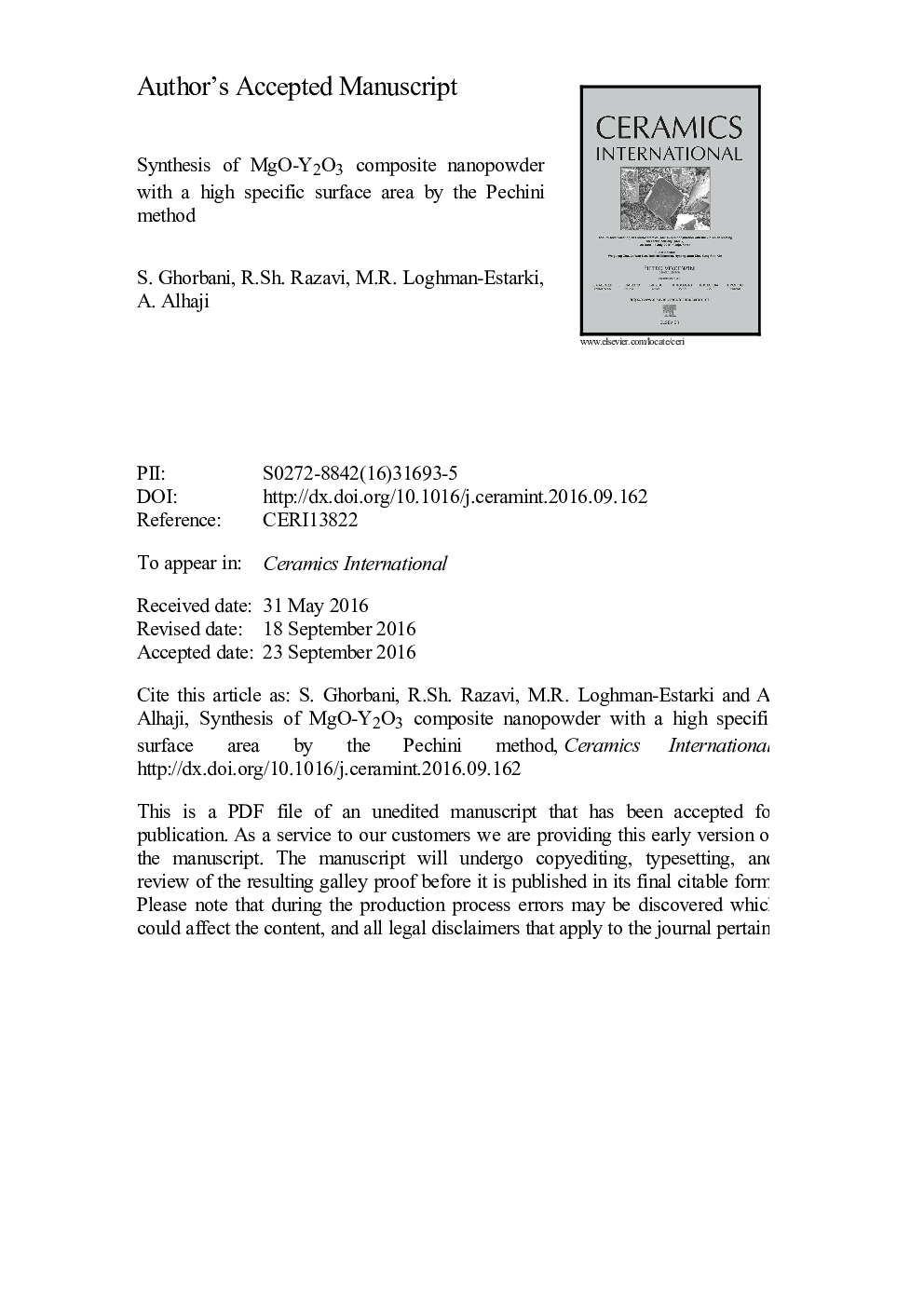| Article ID | Journal | Published Year | Pages | File Type |
|---|---|---|---|---|
| 5438152 | Ceramics International | 2017 | 35 Pages |
Abstract
Yttria-50 vol% magnesia composite nanopowders with a high specific surface area were synthesized by the Pechini sol-gel method. The influences of the mole ratio of citric acid (CA) to transition metals (TM) and the calcination temperature on the properties of the MgO-Y2O3 composite nanopowder were investigated. As-synthesized samples were characterized by X-ray diffraction (XRD), field-emission scanning electron microscope (FESEM), transmission electron microscope (TEM), thermal gravimetric-differential thermal analysis (TG/DTA) and Fourier transform infrared (FTIR) analysis. The optimized sample synthesized with CA to TM molar ratio of 10:1, had the average grain size of 10-15 nm with 85.14 m2/g specific surface area. Decreasing the calcination temperature from 800 to 600 °C, increased the specific surface area from 85.14 m2/g to 134.92 m2/g. The FESEM results showed that MgO and Y2O3 phases had a uniform distribution phase in MgO-Y2O3 composite.
Related Topics
Physical Sciences and Engineering
Materials Science
Ceramics and Composites
Authors
S. Ghorbani, R. Shoja Razavi, M.R. Loghman-Estarki, A. Alhaji,
